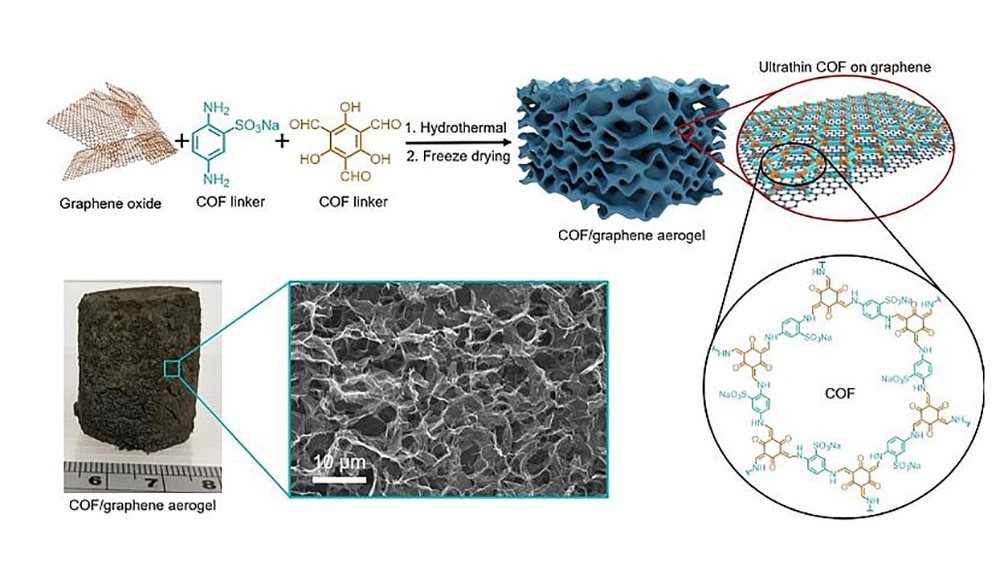Due to increasing industrialization, water pollution is causing great damage to the environment, where industrial wastewater containing organic pollutants is a primary source of the contamination. These industrial pollutants – in particular, organic dyes – are usually highly water-soluble and non-degradable, and many are toxic and carcinogenic. Their discharge into the environment has generated an enormous threat to populations, ecosystems, and living organisms.
To address this issue, engineers at the University of Vienna have developed an innovative composite material that makes an efficient filter for removing organic pollutants from water. The system consists of a nanoporous, ultrathin covalent organic framework (COF) embedded on a sheet of graphene.
Porous materials have a much larger total surface area than a non-porous materials for the same volume and can thus accumulate a particularly large number of molecules on the surfaces in the course of adsorption.

The key to the filter is Covalent organic frameworks (COFs), a relatively novel class of materials. They are particularly porous while at the same time being low-density and lightweight. For the new study, the researchers focused on using a COF to remove organic dyes from water. The dyes the researchers studied in their aqueous model solution were about 0.8 to 1.6 nanometers in size.
“We developed a novel method to form COF in a comparatively environmentally friendly way, using water. As such, we were able to develop small ‘sponges,’ with designed pore sizes and pore shapes in the nanometer range, as well as a tuned negative surface charge that was very selective in pulling the positively charged target molecules, i.e., our dyes, out of the water,” the researchers said, “Just like the sponge soaks up the water, only in our case it’s the pollutants.”
When the material is used in its powdered form, the inner pores of the material are often no longer accessible to pollutants due to pore blockage at the outer edge, especially for large pollutant molecules. The novel composite material offers a thoroughly permeable structure: For this purpose, the researchers grew COF on thin-layered graphene nanosheets.
The combination of graphene and the layer of COF, which is up to two nanometers thick, resulted in a compact, open 3D structure. The ultrathin COF layer could expose more adsorption sites than the bulk COF powder.
On the other hand, the larger, honeycomb-like pores of the graphene network support the transport of water through the filter material. “The large pores of the graphene network in combination with the ultrathin COF layer with a large amount of adsorption sites, therefore, enable particularly fast as well as efficient wastewater treatment,” the researchers said. Due to the comparatively low material input of graphene as well as the possibility to reuse the composite material – after the pollutants have been washed out – as a filter, the development is also relatively cost-efficient, they said.
Nano-sponges with potential for rapid industrial wastewater treatment
Source: Tambay News

0 Comments